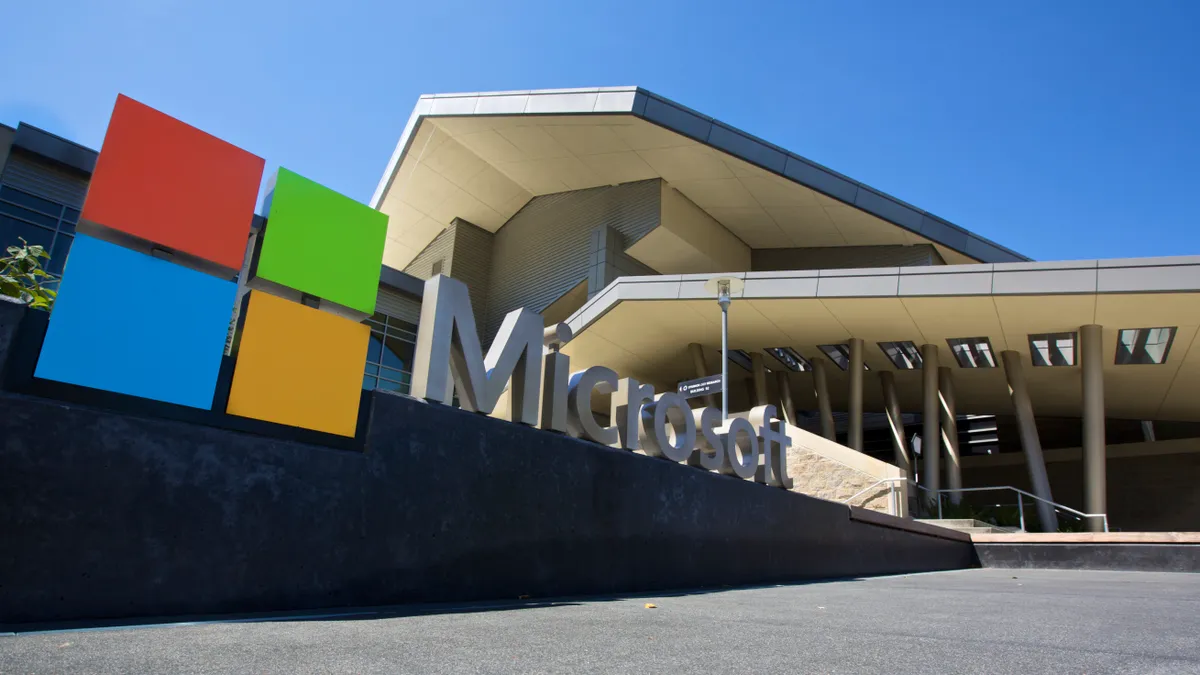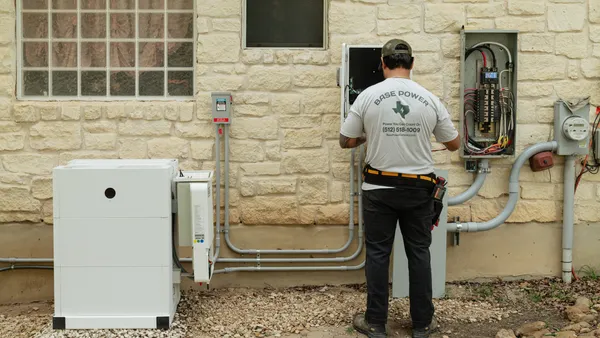Dive Brief:
- Microsoft reduced its combined scope 1 and scope 2 emissions 22% in 2022, according to its 2022 Environmental Report, amid efforts to meet its goal of near-zero scope 1 and scope 2 emissions by 2025. The report also details the company’s progress on becoming zero-waste and “water positive.”
- To reduce its scope 1 emissions, Microsoft said it is increasing the energy efficiency of its data centers, aiming for LEED gold or platinum certification of all major campus projects, reducing fossil fuel use in facilities and vehicle fleets and experimenting with other technologies. The tech firm achieved 95% of its progress on scope 2 emissions through power purchase agreements, green tariff programs and unbundled renewable energy certificates, it said.
- In FY22, Microsoft’s business grew 18% and its overall emissions were down 0.5%, to just under 13 million metric tons of carbon dioxide equivalents. Its scope 1 and scope 2 emissions are less than 4% of that total, however. The report called reducing Microsoft’s scope 3 emissions “the ultimate decarbonization challenge.”
Dive Insight:
In its data centers, Microsoft is working toward a goal of a power usage effectiveness ratio of 1, the report said. PUE is a metric that assesses how efficiently data centers consume energy. It has achieved a PUE of 1.12 in its newest generation of such centers, and all future data centers will achieve LEED gold certification, it said.
Pointing to its data center in Dublin, Ireland, where wind farms generate more than 35% of the country’s electricity, the company said the lithium-ion battery banks installed there, originally intended for backup power, can help grid operators maintain a stable power supply when electricity demand exceeds what renewable sources can provide.
Microsoft said it was able to disaggregate and identify previously unreported electricity for some of its leased data centers on the heels of improvements in its data capture abilities in 2022. “We are also investigating how to encourage transparency and efficiency improvements at leased [data center] sites,” the report states.
Microsoft has committed to being diesel-free in its data center operations by 2030. It began a pilot project in July 2022 to use a “first of its kind,” zero-emission, 3-megawatt hydrogen polymer electrolyte membrane fuel cell back-up power generator at a data center, “demonstrating the application of green hydrogen at industrial scales.”
For Microsoft’s campuses, each “has a sustainability plan with energy efficiency projects planned each year to drive down our energy usage.” the report states. The company is updating its Redmond, Washington, campus with a thermal energy center that heats and cools its office buildings through geothermal exchange wells running almost entirely on renewable energy.
Electrification efforts include moving to all-electric kitchens and electrifying its campus fleet. The tech giant opened its first all-electric kitchen at its Redmond campus, which it says has 12,200 square feet of all-electric cooking space, supports more than 1,000 meals a day and uses 100% renewable hydro power. The company says it plans to construct all of its new kitchens with all-electric equipment and that it is developing retrofit plans for existing operations. The firm also released a “Dining All-Electric” white paper to share its key takeaways, technical details and the decision-making processes that it underwent during implementation.
As for scope 2 emissions, only about 2.6% of Microsoft’s own energy consumption came from nonrenewable sources in 2022, according to a data fact sheet accompanying the environmental report. A tiny fraction of its energy — 236 MWh — came from on-site renewable energy generation. The company signed PPAs around the world in 2022, bringing its total portfolio of carbon-free energy to over 13.5 GW. It invested in carbon capture and the removal of over 1.4 million tons of carbon removal in 2022. “We also made first-of-their-kind multi-year forward offtake commitments to carbon removal, which we view as the model for scaling the industry,” the report said.
















